
Natural Gas, Electricity and Solar: Finding the right energy mix for your home
Most Australian homes have the option to use electricity from the network, natural gas and solar energy for their energy needs. But which is the best option for your home?
Unfortunately, the answer is there is no simple answer! We would all like the cheapest, cleanest, most reliable solution, but the solution for you will depend on factors such as installation and running costs, the number of people in your home, how you use energy during the day and night, where you live and, your appliance preferences.
So, to help you understand the right energy mix for your household, we discuss some of these factors below.
Upfront Costs
Electric appliances usually have the cheapest upfront options for basic hot water, cooking or heating appliance, but costs escalate for the more efficient electric options such as electric induction cooking or heat pump hot water systems.
Induction cooktops require electrical circuits of 40 amps which may exceed the limits of many older homes and cause the main grid breaker to trip. Increasing your homes electrical capacity will require a licenced electrician and may cost up to $2,000.
Natural gas appliances typically start at a slightly higher cost, but overall are in a similar price range. Each appliance requires a gas supply point, which your gasfitter can install if it is not already available. If you’re in AGN’s network and looking to either switch your home to natural gas, or add a new appliance, check out AGN’s appliance rebate program for cashbacks to help offset your upfront costs.
Solar energy was initially used to heat rooftop hot water tanks, but rooftop solar panels are now the most common. The cost of solar panels will vary significantly depending on the amount of energy they can produce, but a typical family home system of 6.6Kw will cost approximately $4,000.
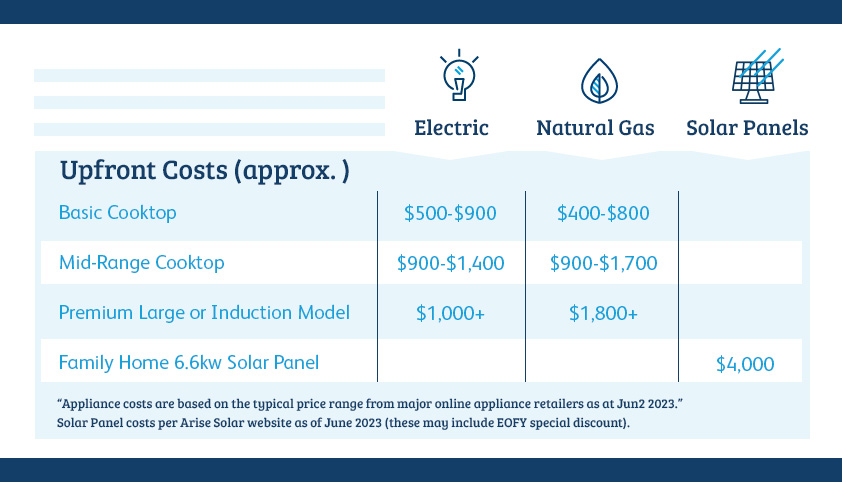
Running Costs
New household appliances will typically last for over 10 years, so over that time the running costs will be a big factor in deciding which appliance is the cheapest long term option for you. It is also worth considering how your household might change over that time, which impacts how much energy you will use.
Although cheaper to buy, low cost electric appliances are usually the most expensive to operate, so may cost you a lot more over the longer term. This is especially true for electric room heaters and storage hot water systems.
Natural gas appliances can have lower running costs for all but the smallest households. Similar to electricity, there is a fixed supply charge for natural gas, but after that a unit of natural gas energy is much cheaper than network electricity. In most areas natural gas gets cheaper as you use more, which suits medium and larger households.
Solar panels and solar hot water appliance use energy from the sun during the day, but when the sun is not shining the appliances require electricity or natural gas to operate. It is during the cooler winter days with less sunshine hours, that you will probably use a lot more energy for cooking, home heating and hot water.
The amount of solar energy available for your home will vary significantly depending on the shade from hills or other buildings, the amount of north or west facing roof to catch the sun, which is definitely something to consider before investing in solar for your home.
Another consideration is if you will be at home using the energy created by the solar panels. If everyone is out at work or school during the day, your solar energy will be sold or ‘exported’ to the electricity network, for which you will receive a “feed in tariff” of up to 10cents/kWh* from your energy retailer. However, after dark, if you use electricity for heating and hot water appliances it is charged at standard tariffs, which can be up to 47.3cents /kWh*.
So, the best savings from solar panels are if you are using the electricity yourself during the day rather than losing much of the benefit by selling it for a low rate when no one is home. (Note, many years ago, feed in tariffs where as high as 58 cents/kWh and some homes with older solar panels installations are still on those high rates). Alternatively, you can reduce the electricity you use at night by using natural gas appliances for cooking, hot water and heating. In many ways, natural gas and solar energy are great partners.
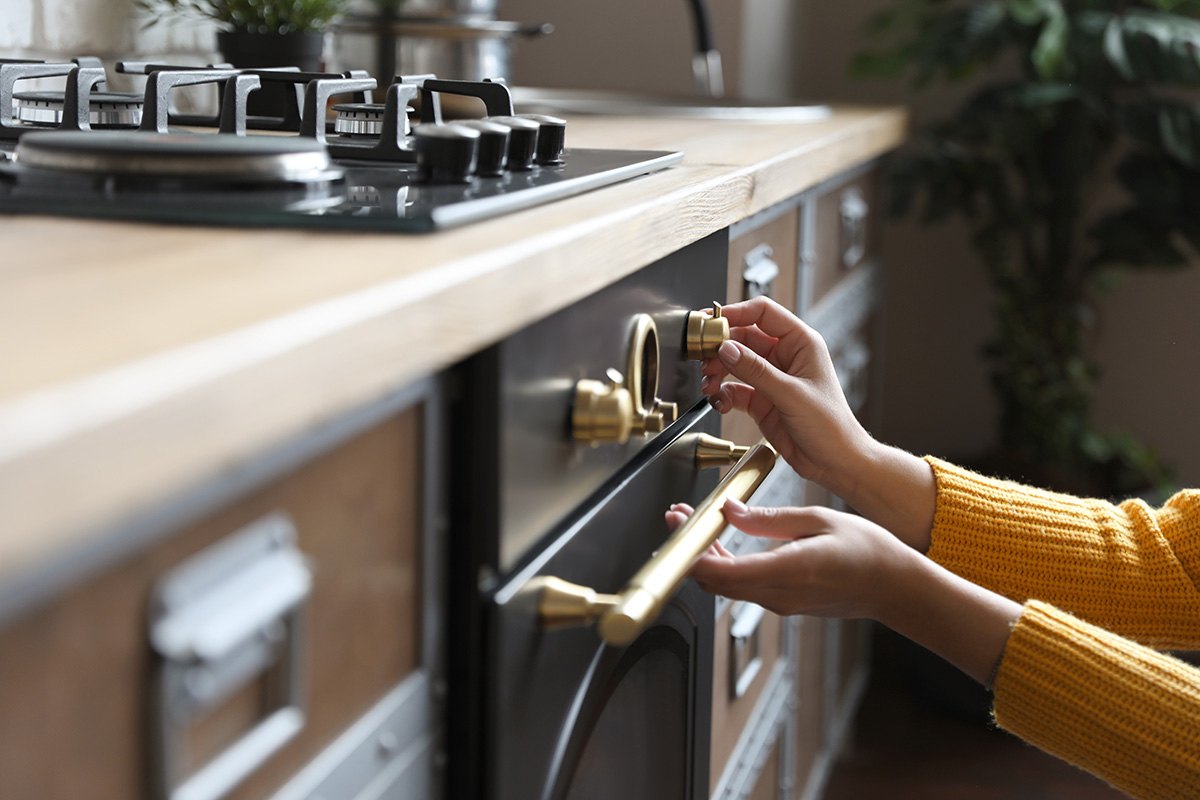

Household Size
The number of people living in your home will be one of the biggest influences on how much energy is used. In a small household, energy consumption will generally be lower and so the additional initial cost of installing natural gas or solar panels, or buying more efficient appliances will take longer to pay off due to lower usage. Of course, these upfront costs may not be the deciding factor for you, if you’re a smaller household and you value performance, better reliability, and lower emissions in your household appliances.
For an average or larger size family house with higher energy consumption, investing more upfront in energy solutions such as natural gas and/or solar panels will deliver quicker cost savings since these solutions generally produce cheaper energy.
Location
Your location will also be a big factor in understanding the best energy options for you. So give consideration to things like
- What are energy prices for my area? (electricity and natural gas costs can differ quite significantly based on location)
- Is natural gas available in my street?
- Do I have good sunlight for solar panels to be a good option?
- Winter climate – low nighttime temperatures in some areas impact the performance of some electric appliances such as heat pumps.

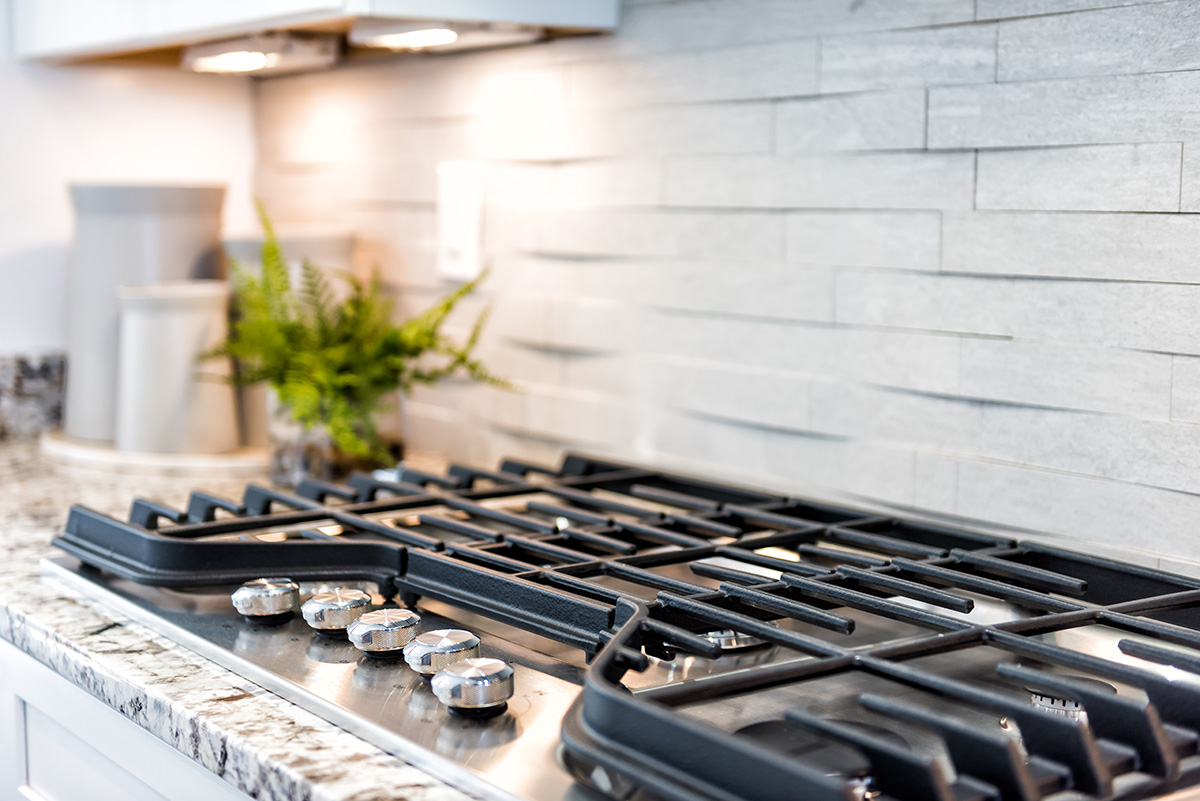
Reliability
The importance of having a reliable energy supply varies for different people. For some, losing power may be little more than an inconvenience, but for others it can be life threatening.
In recent years, the electricity supply in some areas has become increasingly unreliable due to factors such as high demand, storm damage or intermittent supply issues. Few households choose to go without network electricity, but having an additional energy source, (such as natural gas or solar energy) can give you additional options and peace of mind.
Natural gas is the most reliable home energy option - an Australian household on our† natural gas network has, on average, just one unplanned outage every 112 years – making it much more dependable than grid electricity.
Solar panels usually cannot provide a backup during an electricity outage because most are connected to the electricity network and must automatically turn off in an outage to avoid electricity being sent into the powerlines while repairs may be in progress.
Cleanest for the environment
You may be surprised to know which energy supply is the cleanest option varies by location and how you use energy. Solar energy is the cleanest source of energy, followed by natural gas and then network electricity. But when considering your home energy needs in total, if you live in VIC, QLD or NSW, the cleanest option may be using solar panels to run your home lights and appliances, natural gas for cooking, hot water and heating and network electricity for other appliances. This energy combination will reduce your reliance on grid electricity as much as possible, which is important as 65% of grid electricity on Australia’s east coast (excluding TAS) is generated by burning coal which has the highest CO2 emissions**.

No simple answer
As noted earlier, there is no simple option that suits all homes, but if you are planning an appliance upgrade or renovation, it’s worth remembering these key points:
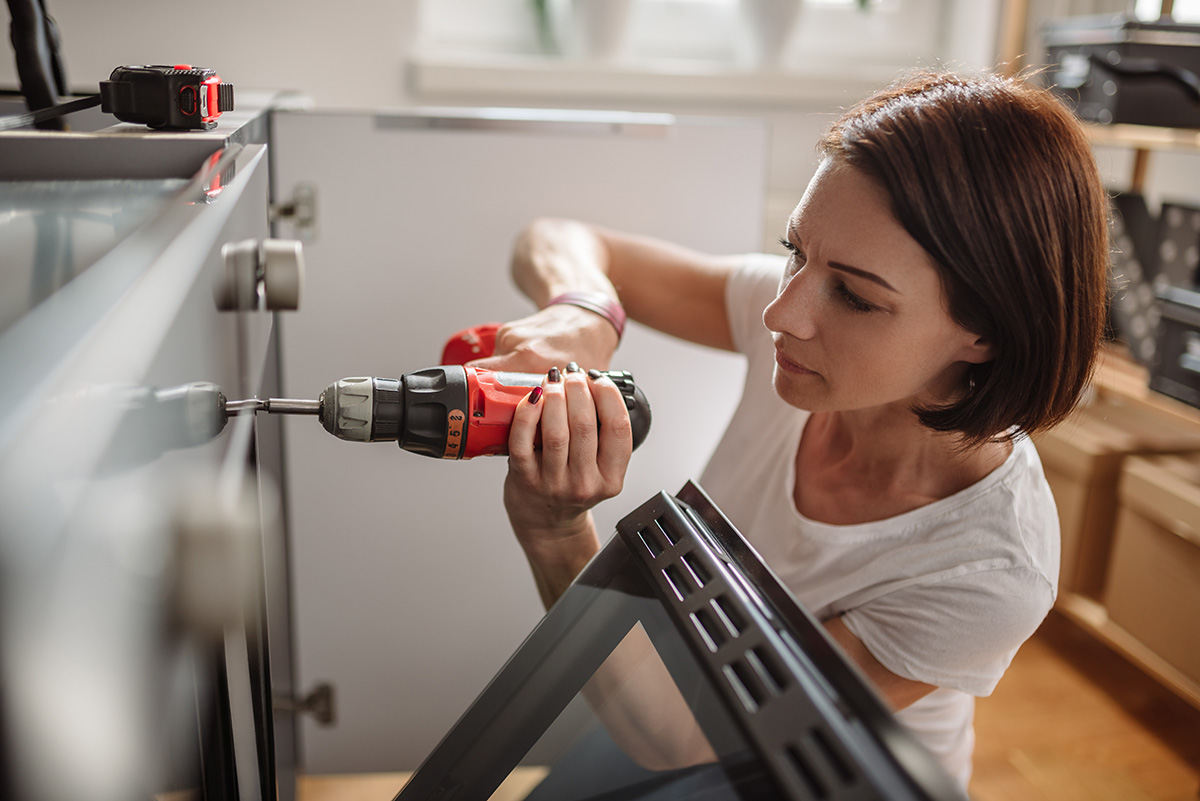
The cheapest upfront appliances are usually basic electric ones, but their higher running costs mean they could cost you a lot more over time. They can also be the least environmentally friendly option, as they are usually inefficient appliances running on electricity, and if you live on the east coast and are drawing your energy from the electricity grid then it’s more often than not created from coal. For example, over the past 12 months 70% of grid electricity in NSW has been generated by coal fired power stations, 76% in QLD and 65% in VIC.***.
Natural gas appliances produce one quarter**** of the carbon emissions compared to those powered by grid electricity generated by coal-fired power stations and can be cheaper to run than electricity for most households in most areas. Natural gas appliances can be an excellent partner to solar panels as they power the (hot water and heating) appliances you mostly use when it is dark.
Installing solar panels is a significant upfront cost in addition to the electric appliance costs but can save you a lot when using solar energy during the day for lights, television/computers and refrigerator. It’s important to be aware that if you are usually out during the day, the solar power your panels produce is exported, and you will only get a small part of the potential savings.
The team at AGL have collated different research***** to understand the different energy consumption needs around the average household.
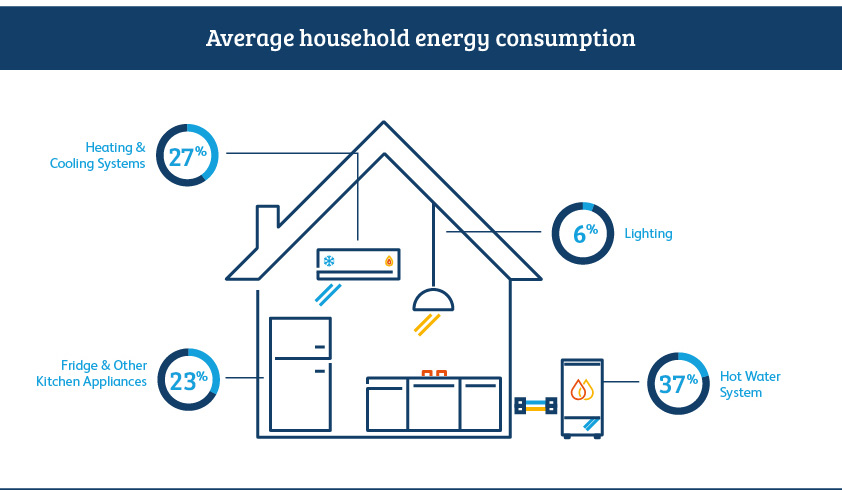
Be sure to learn more about the benefits of natural gas appliances, which include cost savings, environmental benefits, greater reliability, and superior quality, and how it’s transforming your home for this generation and the next.
Footnotes:
* average tariff per Energy Australia “Flexi Plan” and “Solar Max” South Australia rates June 2023
† AGIG's network includes Australian Gas Networks and Multinet Gas who serve over 1.2 million consumers in
South Australia, Victoria, Queensland, New South Wales and the Northern Territory.
** AEMO Website Grid Electricity Dashboard July 2022 – June 2023 NEM Energy Mix
***AEMO | NEM data dashboard
**** energynetworks.com.au/resources/fact-sheets/reliable-and-clean-gas-for-australian-homes-2/
***** https://discover.agl.com.au/your-home/household-appliances-that-use-most-energy/
All figures quoted in this article were reviewed in June 2023.




